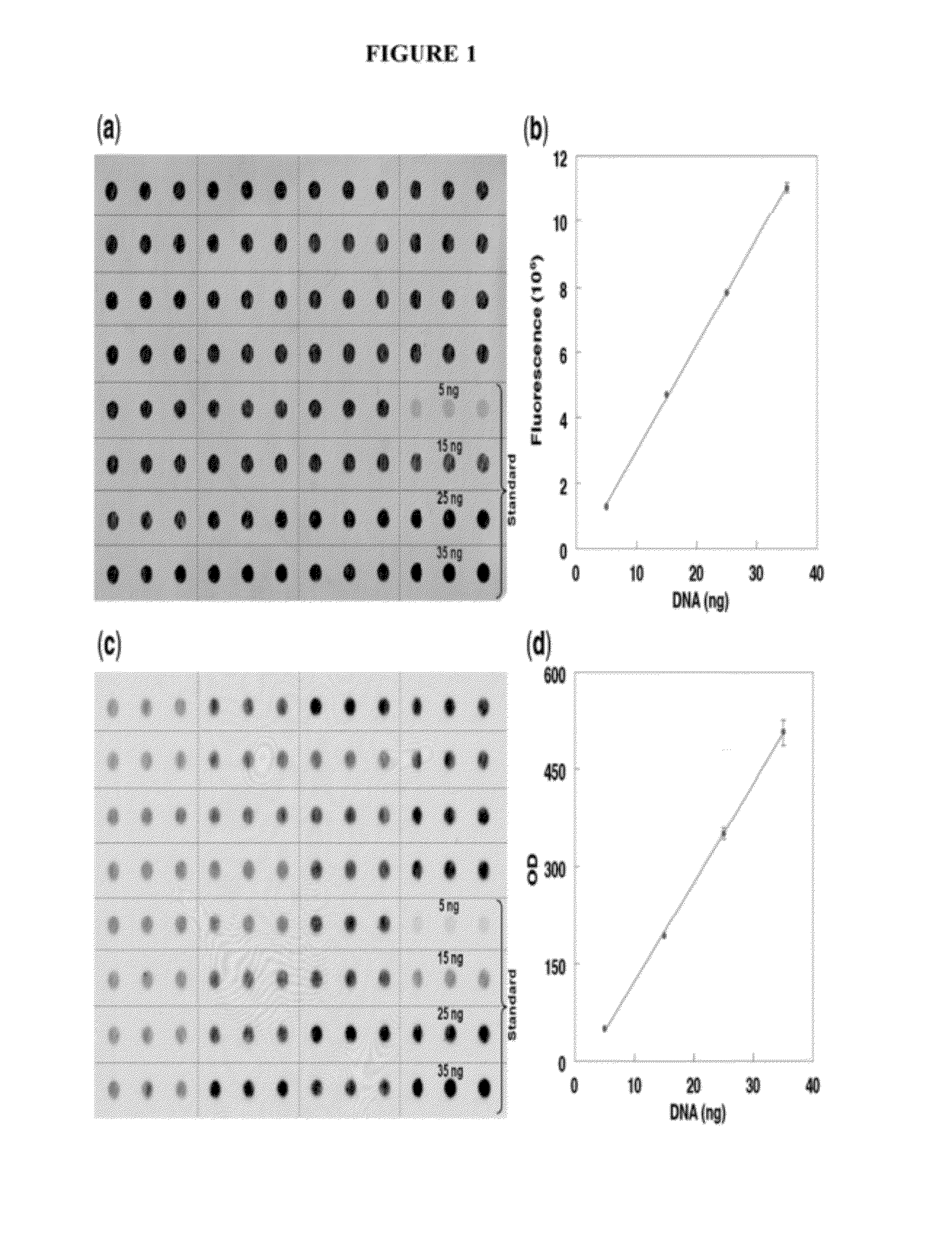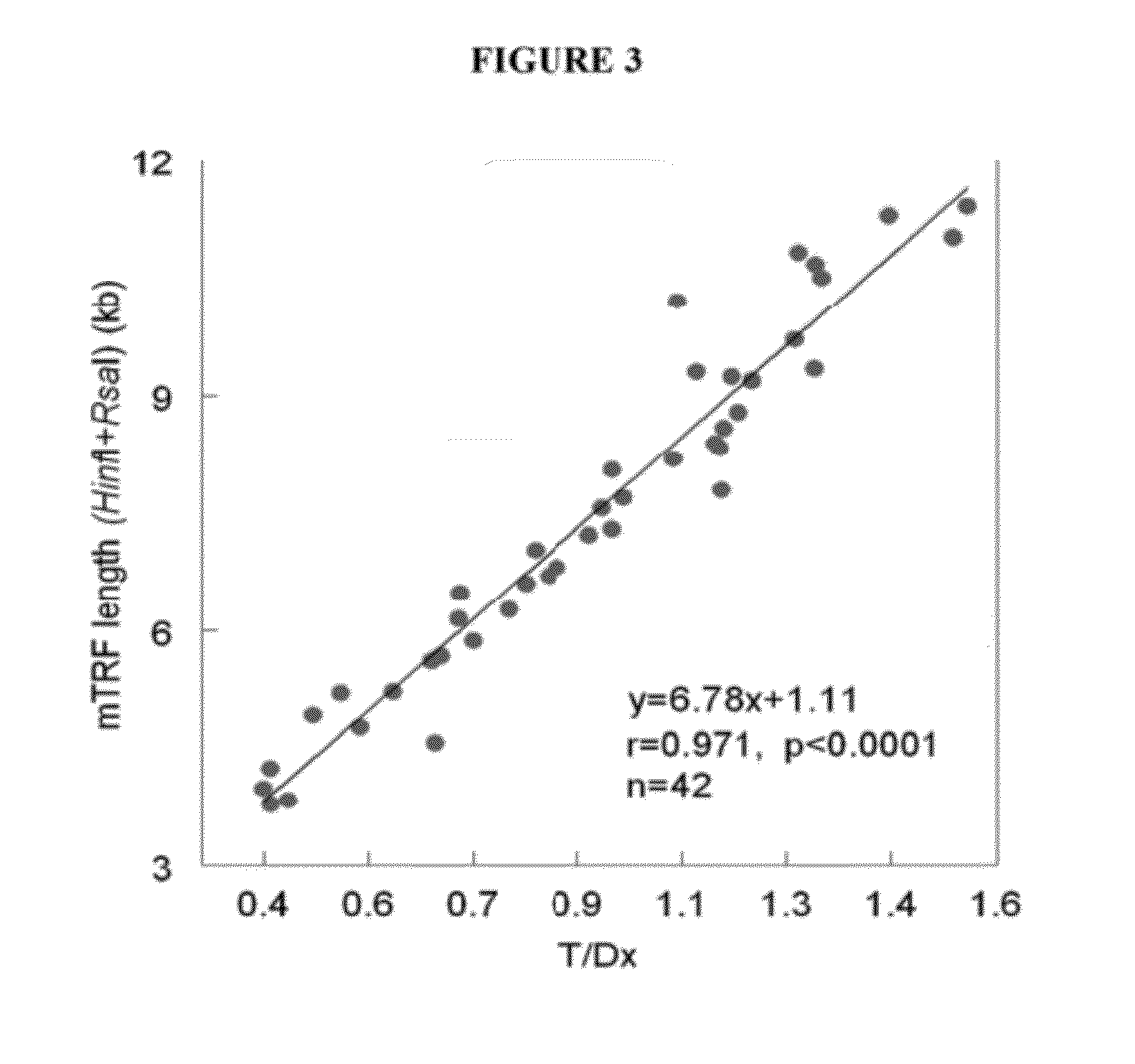Method of Measuring Telomere Length
- Summary
- Abstract
- Description
- Claims
- Application Information
AI Technical Summary
Benefits of technology
Problems solved by technology
Method used
Image
Examples
examples
[0030]General procedures: DNA was isolated by Gentra Puregene Blood kit (Qiagen) from leukocytes donated by 28 individuals. As LTLs in this group did not encompass the overall spectrum of LTLs seen throughout the entire human lifespan, in a second set of experiments the LTLs in leukocyte samples from 7 newborns and 7 elderly persons (aged 90-96 years) was also determined. Measurements of mean telomere length by Southern blots of the TRFs were performed in duplicate after digesting the DNA with HinfI and RsaI restriction enzymes. The telomere probe used for both the TRF length analysis and dot blot analysis consisted of three CCCTAA oligonucleotide repeats, which are complementary to the canonical TTAGGG sequence in humans, and it is labeled at the 3′ end with digoxigenin (DIG).
[0031]Telomere repeats / DNA ratio by dot blot analysis: The linear range of the SYBR DX stain (5-35 ng) was first established. The corresponding telomere signals also displayed linearity within this DNA range.
[...
PUM
| Property | Measurement | Unit |
|---|---|---|
| Length | aaaaa | aaaaa |
Abstract
Description
Claims
Application Information
 Login to View More
Login to View More - R&D
- Intellectual Property
- Life Sciences
- Materials
- Tech Scout
- Unparalleled Data Quality
- Higher Quality Content
- 60% Fewer Hallucinations
Browse by: Latest US Patents, China's latest patents, Technical Efficacy Thesaurus, Application Domain, Technology Topic, Popular Technical Reports.
© 2025 PatSnap. All rights reserved.Legal|Privacy policy|Modern Slavery Act Transparency Statement|Sitemap|About US| Contact US: help@patsnap.com



